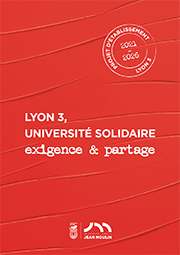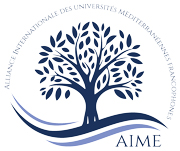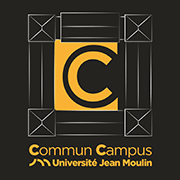AccueilRechercheProgrammes et productions scientifiquesThèsesThèses soutenuesThèses soutenues - 2006-2021Thèses soutenues - 2016
-
Partager cette page
- Recherche,
WIROTH Manuel
Histoire de l'ufologie en France. Des premières recherches individuelles sur les soucoupes volantes à la constitution de réseaux d'étude des ovnis (des années 1940 à nos jours)
Publié le 29 novembre 2016 – Mis à jour le 29 novembre 2016
Thèse en Histoire - Histoire religieuse, politique et culturelle soutenue le 21 octobre 2016.
La recherche sur les soucoupes volantes commence à la fin des années 1940 en France. Elle est principalement le fait de ceux qui se nomment ? soucoupistes ?. En parallèle de cette activité exercée essentiellement à titre individuel, l’armée mène également ses propres enquêtes. Son intérêt pour la question ne se dément pas depuis les années 1940, même si les informations concernant son implication et son action se révèlent peu accessibles. De leur c?té les soucoupistes s’agrègent et les premiers groupements privés d’envergure apparaissent dans les années 1950 et se généralisent à la fin des années 1960. La décennie 1970 correspond, quant à elle, à l’?ge d’or de l’ufologie en France : les organisations se comptent par centaines et les ufologues par milliers. Un véritable réseau de recherche scientifique sur les ovnis apparait donc. Ce réseau s’articule autour des groupements de personnes et des individus -qui publient dans des revues spécialisées- et tente de se connecter à une ufologie scientifique publique en plein essor. Cette dernière, placée sous l’égide du CNES, prend le nom de GEPAN. Ce service, plusieurs fois rebaptisé, existe toujours aujourd’hui. Il s’appuie sur l’armée –principalement la gendarmerie- et certaines administrations qui le pourvoient en informations OVNI. L’ufologie fran?aise –en déclin depuis les années 1980- se caractérise donc par la coexistence d’un réseau de recherche privé et d’un réseau public qui, hormis en de rares occasions, collaborèrent très peu, cette situation contribuant à la maigreur des résultats obtenus par les ufologues.
The research about unidentified flying objects has started in the late 1940s in France. All this is the doing of those who are commonly known in French as the soucoupistes (the researchers in this field). Currently with this mainly individual initiative, the army also has made their own enquiries. Their interest for the question has proved consistent since the 1940s although the details about their implication and their action have been uneasy to know. As for them, the soucoupistes (or French ufologists) have joined together and the first major private groups have come out in the 1950s to become widespread in the late 1960s. Nonetheless, the decade of the 1970s was the golden age of ufology research in France : there were hundreds of organizations and thousands of ufologists. A real reasearch network came out. This network has revolved both around groups of people and individuals, who publish in specialized reviews, and they try to connect to a booming public scientific ufology. The latter, which is under the aegis of the CNES, is known as GEPAN. The department has been often renamed but still exists today. It is based on the army, mainly on the police force, but also on some administrations which provide them with information about UFO. French ufology, which has been in decline since the 1980s, is characterized by the coexistence of a private research network and a public one. Except for a few occasions, both of them have hardly collaborated and this situation explains why ufologists haven’t found many results.
Mots-clé : Armée, GEPAN/ SEPRA/ GEIPAN, Groupement (ufologique), Média,
Ovni, Réseau (de recherche), Revue ufologique, Secret, Sécurité nationale, Soucoupe volante, Soucoupiste, Ufologie, Ufologue
Keywords : Army, GEPAN/ SEPRA/ GEIPAN, Group, Media, Ufo, (research) network, Ufological review, Secret, National security, Flying saucer, Ufology, ufologist
- Jean-Pierre BRACH Directeur d’études EPHE Paris Pré-rapporteur
- Elisabeth CLAVERIE Directrice de recherche CNRS/EHESS Paris Pré-rapporteur
- Eric BARATAY Professeur des universités Université Jean Moulin Lyon 3 Directeur de thèse
- Lionel OBADIA Professeur des universités Université Lumière Lyon 2 Examinateur
- Jean-Pierre ROSPARS Directeur de recherche INRA Versailles Examinateur
- Dominique PESTRE Directeur d’études EHESS Paris Président
Président du jury : Dominique PESTRE
Equipe d'accueil : LARHRA
Décision : AdmisThe research about unidentified flying objects has started in the late 1940s in France. All this is the doing of those who are commonly known in French as the soucoupistes (the researchers in this field). Currently with this mainly individual initiative, the army also has made their own enquiries. Their interest for the question has proved consistent since the 1940s although the details about their implication and their action have been uneasy to know. As for them, the soucoupistes (or French ufologists) have joined together and the first major private groups have come out in the 1950s to become widespread in the late 1960s. Nonetheless, the decade of the 1970s was the golden age of ufology research in France : there were hundreds of organizations and thousands of ufologists. A real reasearch network came out. This network has revolved both around groups of people and individuals, who publish in specialized reviews, and they try to connect to a booming public scientific ufology. The latter, which is under the aegis of the CNES, is known as GEPAN. The department has been often renamed but still exists today. It is based on the army, mainly on the police force, but also on some administrations which provide them with information about UFO. French ufology, which has been in decline since the 1980s, is characterized by the coexistence of a private research network and a public one. Except for a few occasions, both of them have hardly collaborated and this situation explains why ufologists haven’t found many results.
Mots-clé : Armée, GEPAN/ SEPRA/ GEIPAN, Groupement (ufologique), Média,
Ovni, Réseau (de recherche), Revue ufologique, Secret, Sécurité nationale, Soucoupe volante, Soucoupiste, Ufologie, Ufologue
Keywords : Army, GEPAN/ SEPRA/ GEIPAN, Group, Media, Ufo, (research) network, Ufological review, Secret, National security, Flying saucer, Ufology, ufologist
Directeur de thèse : Eric BARATAY
Membres du jury :- Jean-Pierre BRACH Directeur d’études EPHE Paris Pré-rapporteur
- Elisabeth CLAVERIE Directrice de recherche CNRS/EHESS Paris Pré-rapporteur
- Eric BARATAY Professeur des universités Université Jean Moulin Lyon 3 Directeur de thèse
- Lionel OBADIA Professeur des universités Université Lumière Lyon 2 Examinateur
- Jean-Pierre ROSPARS Directeur de recherche INRA Versailles Examinateur
- Dominique PESTRE Directeur d’études EHESS Paris Président
Président du jury : Dominique PESTRE
Equipe d'accueil : LARHRA
Documentation
Mise à jour : 29 novembre 2016







